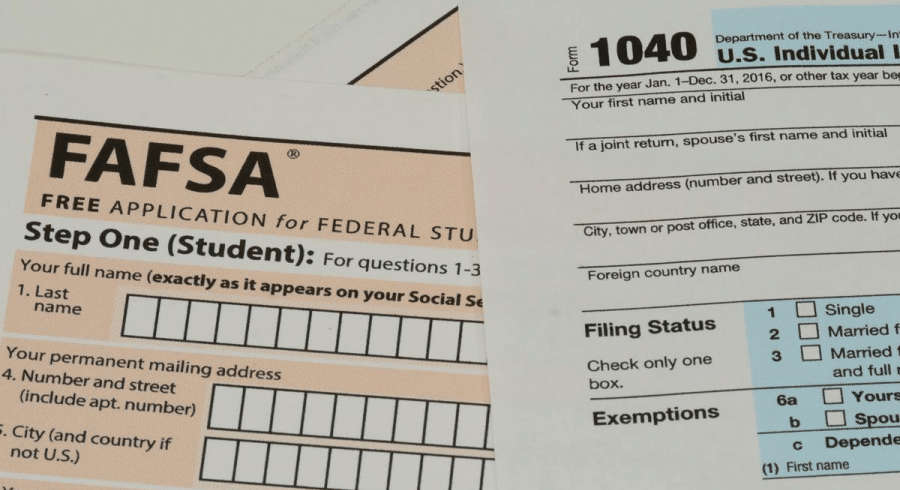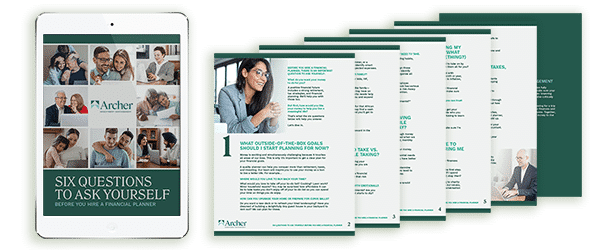Supercharging Your Road to Retirement with a Mega Backdoor Roth
- Roth IRAs and Roth 401(k)s are ideal vehicles to achieve tax diversification since money in the accounts grows tax-free and is tax-free upon withdrawal in retirement
- The mega backdoor Roth strategy helps high-income individuals get more money into the Roth bucket
- If your 401(k) allows after-tax contributions, in-service withdrawals, and you have other financial obligations and goals taken care of, then this strategy could be for you
Did you know there’s a way to fast-track your road to retirement? It doesn’t involve some exclusive side hustle or a complex tax loophole. It’s a savings strategy that you might be able to use within your existing 401(k).
The so-called mega backdoor Roth has grown in popularity over recent years but remains a bit under the radar. The key thing with the strategy is your company must offer this savings method. Due to its complexity, many plans do not allow it. If your 401(k) does, though, you can sock away impressive sums of money in a Roth account. Let’s outline how it works and why it can be an amazing way to save for retirement.
Understanding Roths
Table of Contents
What makes the mega backdoor Roth special is that high-income earners can easily move cash that would have otherwise gone into a regular after-tax brokerage account into a Roth IRA. That means the potential to accumulate more money tax-free.
With Roth accounts, such as a Roth IRA or Roth 401(k), assets in the account have already been taxed, so they are allowed to grow and eventually be distributed without taxes owed. If you meet certain timing requirements, you can even withdraw rolled-over Roth IRA contributions without paying taxes or a penalty. A Traditional IRA or regular 401(k) works the opposite tax-wise in that you contribute pre-tax money and then owe ordinary income tax on withdrawals.
Moreover, these days more employers offer their workers the option to save for their retirement via a Roth 401(k) or Roth 403(b). What’s great here is that there are no income limits, whereas if you make too much money, you are ineligible to put money into a Roth IRA.
For 2023, a single tax filer cannot earn more than $153,000 in modified adjusted gross income (MAGI) if they wish to contribute to a Roth IRA. Married filing jointly individuals have a $228,000 MAGI limit. There are phaseout ranges for incomes slightly below those figures, too. What’s a bit of a downer is that the annual contribution limit to a Roth IRA is just $6,500 ($7,500 if you’re age 50 or older). The mega backdoor Roth allows you to save way beyond those amounts.
The Backdoor Roth IRA
Before we detail the mega backdoor Roth, let’s review the more common backdoor Roth IRA strategy. Once you grasp the reasoning behind the backdoor Roth IRA, it will make understanding the mega backdoor Roth a breeze.
If your income is above the MAGI limits, you cannot directly make Roth IRA contributions. The backdoor Roth IRA conversion strategy is a popular way for those folks to move money from a Traditional IRA into a Roth IRA. It’s a process whereby you make a nondeductible Traditional IRA contribution and then immediately convert the money to your Roth IRA.
The strategy has some requirements, such as the IRA aggregation rule and the pro-rata rule, but careful planning can help ensure there are no snafus. What’s ideal is that there are no income limits with backdoor Roth IRA conversions. Also, with Roth IRA assets, you won’t have to take Required Minimum Distributions (RMDs) from that account type in retirement.
The goal here is to get more money into the valuable “Roth” bucket so that more of your assets can grow and one day be withdrawn tax-free. The same logic applies to the mega backdoor Roth.
What is a Mega Backdoor Roth? What’s Required to Do It? Is It Right for You?
The mega backdoor Roth is not a specific account, but a strategy. It is most beneficial for workers with high incomes since the mega backdoor Roth allows for money to be rolled over into an after-tax Roth IRA or Roth 401(k). It’s like a supersized backdoor Roth conversion.
Assuming you max out your pre-tax 401(k) account with $22,500 ($30,000 for those age 50 and up) in contributions for 2023, then you can put up to $43,500 (for a $66,000 total annual retirement account contribution) into a Roth account via your 401(k) plan if after-tax contributions and in-service withdrawals are allowed by your employer.
In general, you should first make the maximum contribution to your 401(k) and IRA before embarking on the mega backdoor Roth. It is also important that you consider your employer’s matching contributions as you cannot go above the $66,000 annual retirement contribution limit between your contributions and your employer’s. In summary, you need to check three boxes in order to do the strategy: a workplace retirement plan that allows after-tax contributions, the ability to make in-service withdrawals, and extra money for savings after maxing out your 401(k) and Roth IRA contributions.
1. After-tax contributions.
First, let’s understand what after-tax contributions are. After you have maxed out your regular 401(k) for the year, you might be on the hunt for more tax-saving plays. The mega backdoor Roth strategy works only if you can make after-tax contributions to the regular 401(k). Why would you want to do that? Well, it’s all about setting up the next move on the mega backdoor Roth chessboard. The after-tax cash is a separate bucket in your regular 401(k) account.
2. In-service withdrawals to a Roth IRA or transfer to a Roth 401(k).
The next step is to make an in-service withdrawal. Here is where you might hit a roadblock since not all plans allow workers to make withdrawals while they are still employed. Why’s that? It can be a tedious feature for firms along with even some risks. What’s more, there are IRS rules that restrict 401(k)s from only benefitting so-called “highly compensated employees” through non-discrimination tests since most workers with average salaries do not have money left over to participate in something like the mega backdoor Roth strategy.
Once you make an after-tax contribution, you should immediately perform an in-service withdrawal before the money has time to earn interest or earnings since those amounts would be taxable in the rollover process. A quick caveat is if you are leaving a company, you can actually perform a mega backdoor Roth even if the employer does not offer in-service withdrawals, but you will likely end up owing income tax on the investment earnings due to the time it takes to complete the process.
To all you self-employed workers out there, you might have the choice to make mega backdoor Roth contributions if your solo 401(k) plan allows it. Once again, though, it varies by plan provider.
3. Extra cash.
Taking a step back from the rules and procedure, the strategy only makes sense if you are in the fortunate position to have discretionary income burning holes in your pocket. For many people, there isn’t much left after maxing out a 401(k), IRA, and Health Savings Account (HSA) while paying for everything else in life. It’s prudent to make sure you have knocked out any high-interest debt, have an emergency fund, and are adequately insured before tackling the mega backdoor Roth strategy.
Also, think about prioritizing saving for your children’s education through a college savings plan. But if you are in the super-saver camp, then you should certainly take a close look at making the mega backdoor Roth part of your annual savings goals.
Mega Backdoor Roth Example
As with many financial planning topics, the rules can be convoluted, but seeing an example helps put the strategy in the right view.
Let’s say you’re 45 years old with a $200,000 salary and have already maxed out your 401(k) with a $22,500 pre-tax contribution during the first six months of 2023. First, well done. Now, what’s the next best play? You might eye the mega backdoor Roth.
We will assume your employer matched 50% of the first 6% of your 401(k) contributions. That’s another $6,000 into your plan, summing to $28,500. You still have $37,500 before you hit the $66,000 total plan contribution limit.
Now, you decide to make after-tax 401(k) plan contributions up to that $37,500 figure. It’s wise to roll over your after-tax contributions to your Roth IRA (or make an in-plan conversion to your Roth 401(k)) as soon as possible to avoid owing income tax on earnings. If you do see some growth, then the IRS does allow you to segregate the funds so that you roll over just the after-tax contributions into a Roth IRA while the earnings go into a Traditional IRA.
That’s it. You have just supercharged your retirement savings.
The Pro Rata Rule with Mega Backdoor Roths
It is a good idea to sit down with a financial planner to outline how you would go about the strategy. Some rules can trip up even seasoned investors well-versed in retirement savings. The pro rata rule is one such area. It says that you cannot withdraw just pre- or after-tax contributions from your regular 401(k). You must take a pro-rata share, equal to the ratio of your contribution types.
For instance, if your 401(k) is worth $300,000 with $200,000 being pre-tax contributions and $100,000 coming from post-tax, then withdrawals would be $2 to $1 pre-tax and post-tax. With the mega backdoor Roth, the pro rata rule stipulates that you might not be able to make an in-plan distribution of exclusively post-tax money. You might be relegated to rolling over the entire pre-tax amount to a Traditional (or Rollover) IRA.
Some employer-sponsored retirement plans track and separate pre-tax and after-tax contributions, including the investment growth from those sources. If that’s the case, then you’re golden. You can elect to withdraw just the post-tax contribution balance as an in-plan distribution to your Roth IRA.
What If Your Plan Doesn’t Allow It?
Don’t be bummed out if your company does not offer the chance to perform the mega backdoor Roth. You can always capture tax diversification by contributing to a Roth 401(k) since most workplace plans have that feature. Keep in mind that employer matching contributions are done on a pre-tax basis (though that could change with the new Secure Act 2.0).
Also, there is nothing wrong with investing in low-cost, tax-efficient exchange-traded funds (ETFs) in a taxable brokerage account if you are in the strong position to save beyond what is available through a 401(k), IRA, and HSA. Finally, if your income is too high to make tax-deductible Traditional IRA contributions and above the income limit imposed on Roth IRA contributions, then annual backdoor Roth IRA conversions can add up and compound nicely over time.
The Bottom Line
The mega backdoor Roth strategy can be a way to zoom ahead on your journey to retirement. By getting more money into the Roth bucket, you reduce your long-term tax liability, giving you more freedom in retirement. There are important considerations with the mega backdoor Roth and not all company plans allow it. Be sure to check with your HR department to see if it’s available and work with an experienced financial planner to ensure you are following all the rules.










